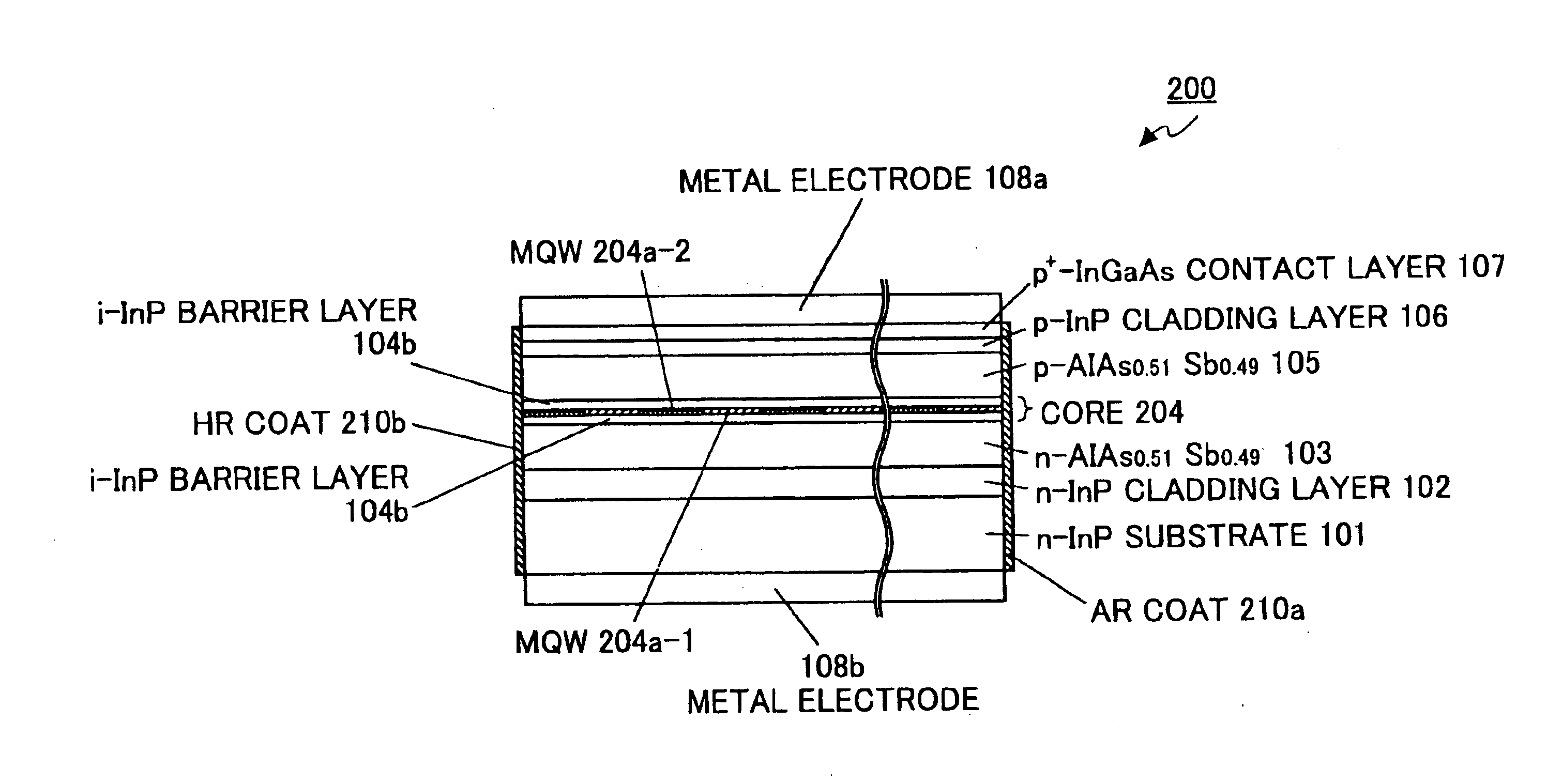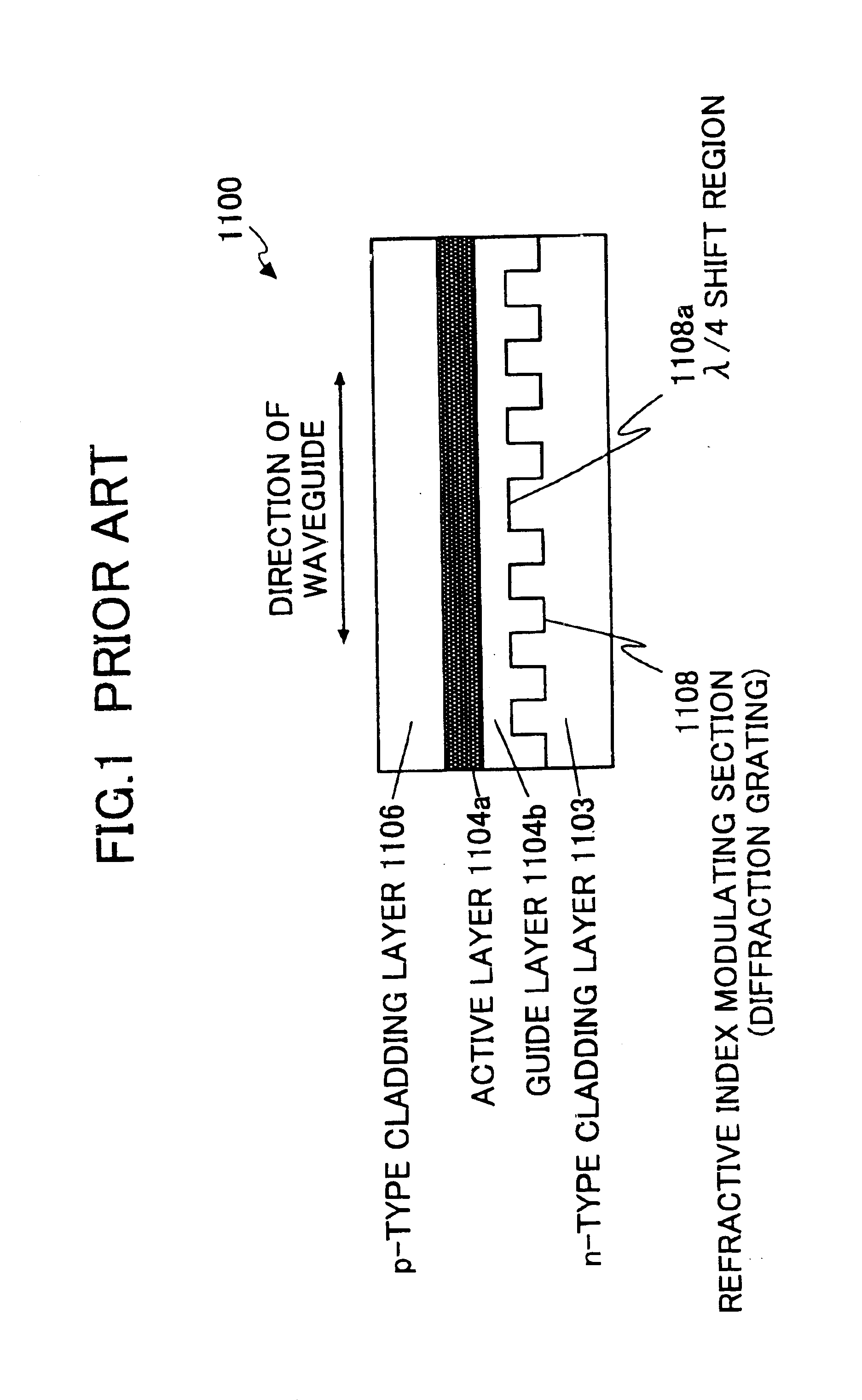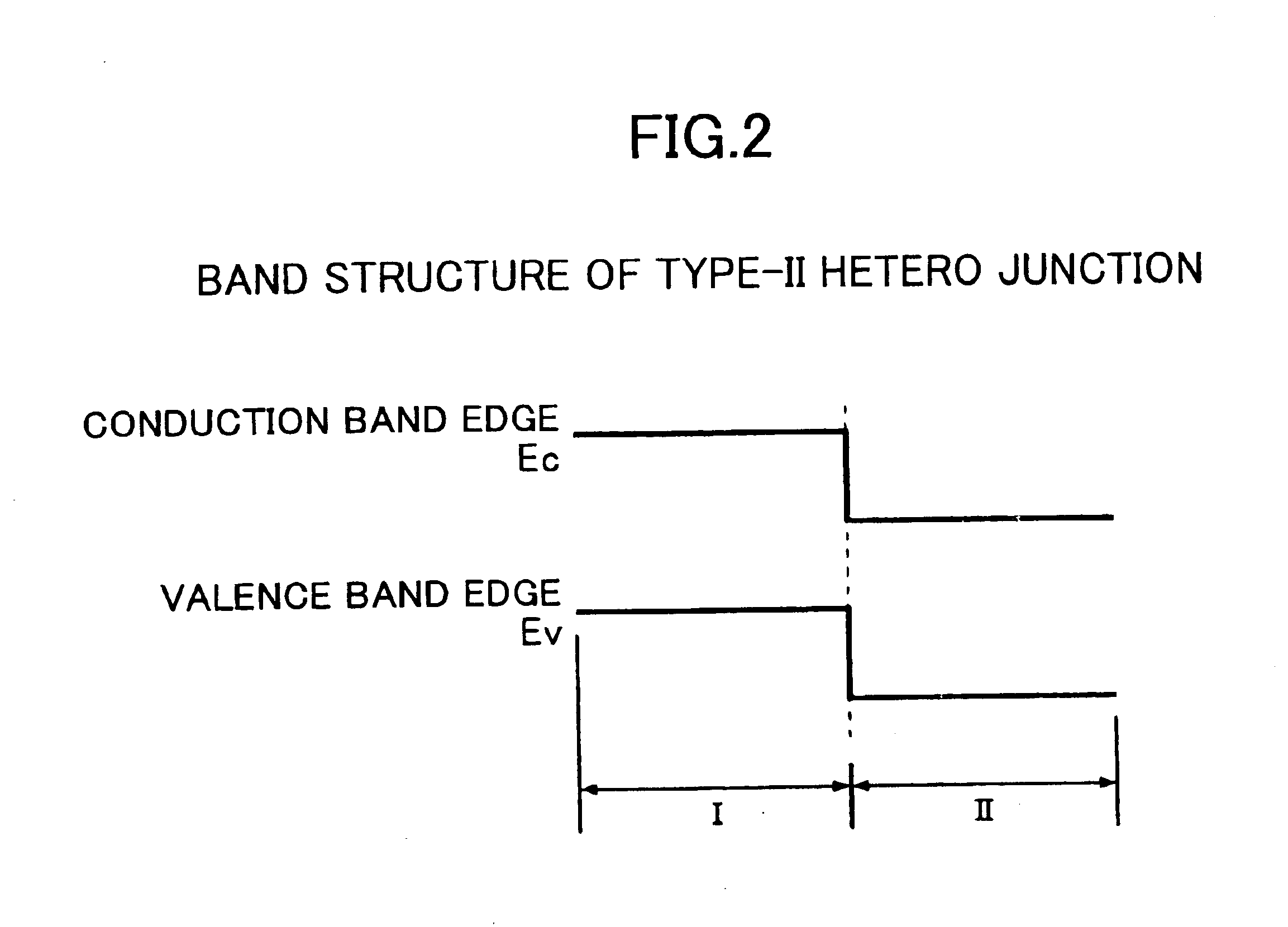Hetero-junction laser diode
a laser diode and heterojunction technology, applied in lasers, semiconductor lasers, solid-state devices, etc., can solve the problems of weak reflection return light, deterioration of single wavelength characteristic, and difficulty in achieving high light-emission efficiency
- Summary
- Abstract
- Description
- Claims
- Application Information
AI Technical Summary
Benefits of technology
Problems solved by technology
Method used
Image
Examples
first embodiment
FIGS. 4 through 6 illustrate a gain-coupled DFB laser 100 according to the first embodiment of the invention. In the first embodiment, the gain-coupled DFB laser 100 is fabricated on an indium phosphide (InP) substrate and oscillates at 1.3 .mu.m (microns) region.
To define type-II hetero junction in the active layer, bulk crystal of antimony compound semiconductor material is used; however, any other materials that can define a type-II band structure can also be used.
FIG. 4A is a cross-sectional view of the gain-coupled DFB laser 100 taken along a plane perpendicular to the longitudinal axis of waveguide (i.e, the active layer), and FIG. 4B is a cross-sectional view of the active layer 104a of the gain-coupled DFB laser 100 taken along the longitudinal axis of the waveguide.
In FIG. 4A, the gain-coupled DFB laser 100 is fabricated on an n-type InP substrate 101 doped with n-type impurities. An n-type InP cladding layer 102 with a thickness of 1 .mu.m, which is also doped so as to exh...
second embodiment
FIG. 7A and FIG. 7B illustrate a gain-coupled DFB laser 200 according to the second embodiment of the invention. Type-II hetero junction of bulk crystals of homogeneous semiconductors explained in the first embodiment is applicable to a SQW (strained quantum well) structure or a MQW (multiple quantum well) structure. Accordingly, in the second embodiment, a gain-coupled DFB laser diode 200 has an active layer with an MQW structure including an InGaAsP quantum well that has a lattice constant matched with the InP substrate.
FIG. 7A is a cross-sectional view of the gain-coupled DFB laser 200 taken along the longitudinal axis of waveguide, and FIG. 7B is an enlarged view of the MQW structure having type-II hetero junction. The same elements as those shown in the first embodiment are denoted by the same numerical references, and explanation for them will be omitted.
The gain-coupled DFB laser 200 has a core 204 that includes an active layer 204a with the MQW structure. The active layer 20...
PUM
 Login to View More
Login to View More Abstract
Description
Claims
Application Information
 Login to View More
Login to View More - R&D
- Intellectual Property
- Life Sciences
- Materials
- Tech Scout
- Unparalleled Data Quality
- Higher Quality Content
- 60% Fewer Hallucinations
Browse by: Latest US Patents, China's latest patents, Technical Efficacy Thesaurus, Application Domain, Technology Topic, Popular Technical Reports.
© 2025 PatSnap. All rights reserved.Legal|Privacy policy|Modern Slavery Act Transparency Statement|Sitemap|About US| Contact US: help@patsnap.com



